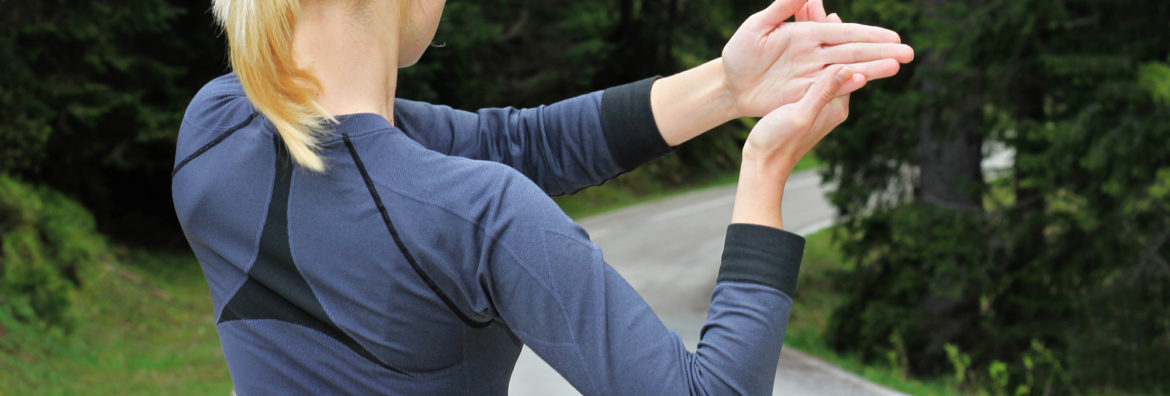
Scoliosis Treatment
Scoliosis is a term that refers to when the spine has any abnormal sideways or rotational curvature. On an x-ray, the spine may appear to have an “s” or “c” shape. Scoliosis affects up to 3% of the population or an estimated 7 million people in the United States. Every year, scoliosis patients make more than 600,000 doctor’s visits, an estimated 30,000 children are fitted with a brace, and 38,000 patients undergo spinal surgery. Scoliosis can be congenital or develop because of a neuromuscular disease such as muscular atrophy or spina bifida. However, most people have idiopathic scoliosis, which means that there was no known triggering injury or infection that caused the curvature of the spine.
Spinal Scoliosis Signs
About 80 percent of scoliosis cases have no identifiable causes, although there is research that indicates that there might be a genetic connection. Although scoliosis can occur at anytime, it’s usually less likely during adulthood once a person has reached skeletal maturity. Curvature to the spine progresses more quickly at times of rapid growth, which is why it’s more common during early adolescence from the ages of 10 to 15. When viewed from the back, a healthy spine appears as a straight line. A person with scoliosis will appear to have a side-to-side curve in their spine. An x-ray of the spine is usually the best way to measure the degree of curvature. Having a curve of 10 degrees or greater is classified as scoliosis. A curve is considered severe if it measures greater than 25 to 30 degrees.
There are several common physical symptoms that may indicate scoliosis. One common physical exam is called the Adam’s Forward Bend Test in which a medical professional observes for one or more of the following signs:
Possible Signs:
• One shoulder is higher than the other
• One side of the rib cage is higher than the other
• One hip appears higher or more prominent than the other
• One shoulder blade is more prominent than the other
• Uneven waistline
• Body tilt
Scoliosis Treatment
The curvature of the spine itself often does not cause any pain or noticeable symptoms. If back pain is present with scoliosis, it may be because the curve of the spine is causing stress and pressure on the spinal discs, nerves, muscles, ligaments, or joints. Severe cases are very rare and are usually characterized by pinched nerves, herniated discs, reduced lung capacity, and overall decreased mobility. It’s difficult to predict which curves will progress significantly and which will not. Therefore, it’s important to check-in with your medical professional on a regular basis if you’ve been diagnosed with scoliosis.
Treatment for scoliosis is based on the age of the patient, how much more they are likely to grow, the degree of curvature, and the type of scoliosis. Based on those factors, a medical professional may recommend more frequent observation, bracing, or surgery. Minor scoliosis cases often require a brace, while more serious cases may ultimately require spinal surgery to stop the curve from getting worse. Adults with degenerative scoliosis and spinal stenosis may require surgery to relieve pressure on the nerves around the spine.
Physical Therapy For Scoliosis
Physical therapy is considered when you begin developing other conditions due to the curvature of your spine. Adults who had scoliosis as children are more likely to have chronic back pain compared to people in the general population. If scoliosis significantly alters a person’s spinal alignment, posture, and movement patterns they may experience irritation and pain in the back. Scoliosis is a chronic condition and there are no ways to completely reverse the progression of spine curvature. Therefore, it’s important to stabilize the curvature as well as manage any resulting pain because of muscular imbalances. If you’re undergoing spinal surgery or if you’re feeling general symptoms of back pain, our physical therapists tailor treatment to each patient’s individual needs. Depending on where you’re feeling discomfort in your back, they can target specific areas to promote pain relief. Treatment could include a combination of methods that address the muscular imbalances around the spine:
• Manual techniques: Hands-on techniques used restore mobility to any joints or tissues that may be restricted due to scoliosis. Some muscles will be stronger or tighter than others because of the curvature of the spine. They’ll work on removing restrictions from those muscles to reduce pain and retrain your movement patterns.
• Individualized exercises: Aimed to improve range of motion and strengthen muscles surrounding the spine that may have been weakened by the change in the spine’s position. Besides your spine, areas of weakness could be in your hips, shoulders, and even the feet. Core strengthening exercises will also be key in reducing pressure from spinal misalignment in your back.
• Postural alignment: Aids with elongating the spine to reduce pressure on your back. Depending on your level of curvature, your physical therapist will adjust certain aspects of your posture so you can re-establish spinal symmetry as best you can. If you’ve had surgery, your physical therapist will teach you how to maintain a new normal posture as a result of the new positioning of your spine.
• Other modalities: Depending on how best to manage your specific levels of pain, ice, heat, or electrical stimulation may be used to complement main methods of treatment.
